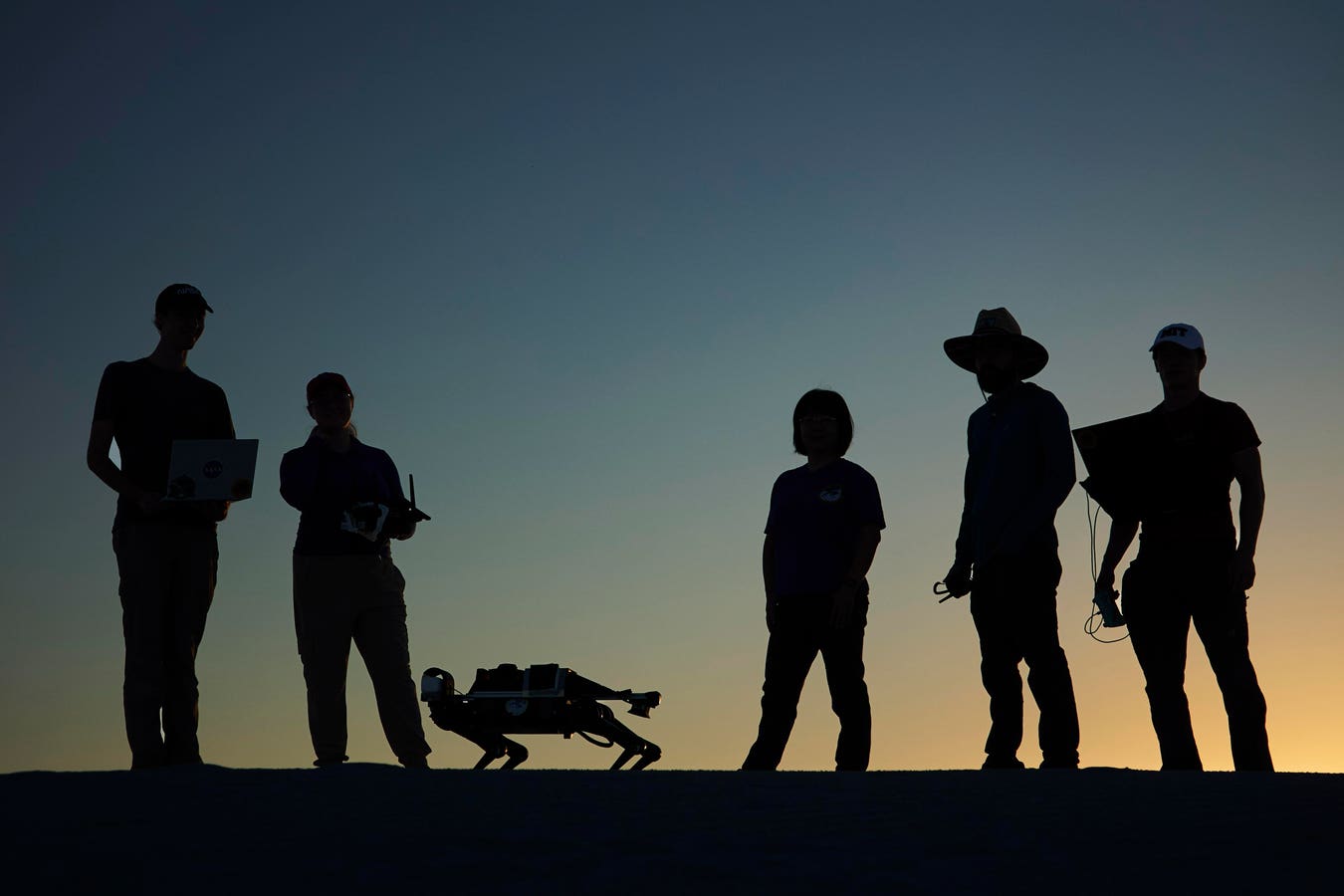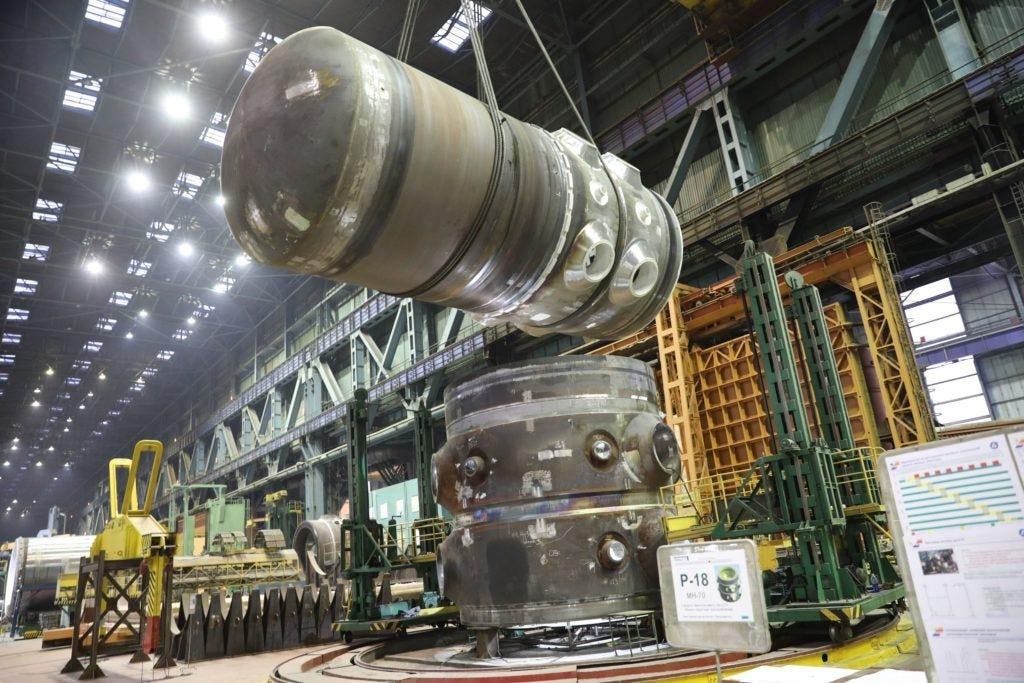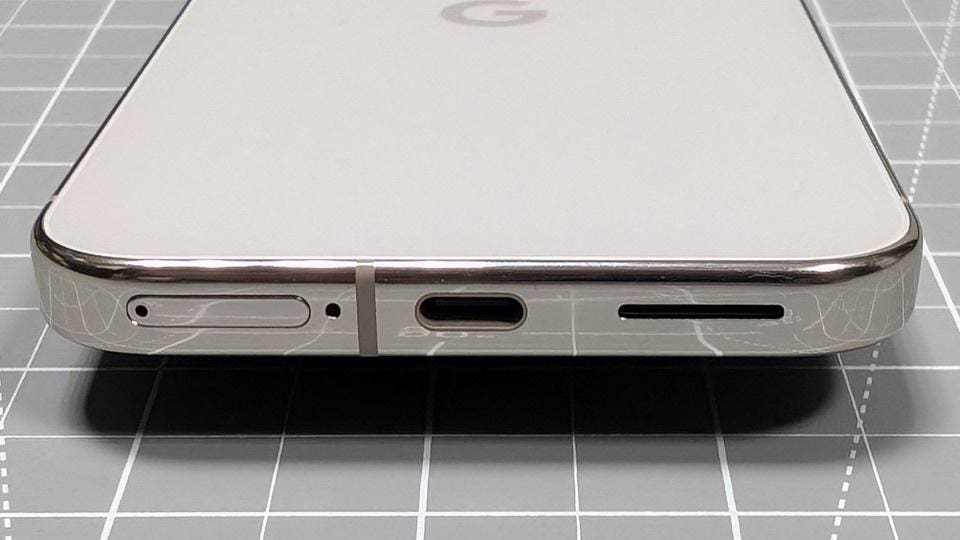Scientists from the LASSIE project with their quadruped robot at White Sands National Park, New Mexico in August. The quadruped robot was able to scout and train autonomously. The work is part of NASA’s Moon to Mars project.
2025 Justin Durner Photography
Oregon State University researchers tested a quadruped robot at White Sands National Park, training it as a future field partner for astronauts on Mars.
NASA’s Moon to Mars program is building a roadmap for the long-term lunar exploration of Mars’ surface. Each contribution enables NASA to create the architecture that set the course for exploration under the Artemis campaign in preparation for future crewed missions to Mars.
Researchers at Oregon State University (OSU) are an academic partner in that program, which is developing the tools for long-term lunar exploration and future crewed missions to Mars. Through their NASA-funded project a team of researchers have been working on a quadruped robot that will support that program.
Cristina Wilson, a robotics researcher in the College of Engineering at Oregon State University said the Moon to Mars program is very focused on the path to mount a human mission to Mars.
She cites the LASSIE project (Legged Autonomous Surface Science in Analog Environments) formed in 2022, in which OSU is specifically focused on the human-robot interaction component of LASSIE project. She says it an example of how quadruped robots can support safe astronaut operations on another planet that yield maximum science return.
“We are investigating using the quadruped to scout ahead of the human explorer and communicate back safe paths for the astronaut or other robots/assets to traverse, and also using the quadruped to help the astronaut identify areas of high science interest in periods of non-communication with scientists back at Mission Control on Earth,” said Wilson.
“On future lunar or Mars missions, the LASSIE team would like to see quadrupeds used as intelligent field companions, that complement the capabilities of other robot assets like rovers and drones,” she added.
Autonomous quadruped robot scounting on its own
At White Sands in 2025, the quadruped robot either made or contributed to every data collection decision. The field scientists acted only as supervisors, free to pursue their own science actions and check-in with the robot as needed.
2025 Justin Durner Photography
“Because we are studying robotics for field science, the best way to test our robots is to deploy them in real field science missions,” said Wilson.
To test the quadruped and learn how to adapt them for extraterrestrial environments, in August 2025, the research team took a second trip to White Sands National Park in New Mexico to test the quadruped in rugged terrrain most similiar to Mars.
The August trip to White Sands showed the quadruped could act autonomously.
“In this research trip, the robot either made or contributed to every data collection decision. The field scientists acting only as supervisors and were free to pursue their own science actions and check-in with the robot as needed,” said Wilson.
“We were able to measure the actual science output that is enabled by having an intelligent quadruped field assistant – that isn’t possible in the lab,” she said.
“The robot made decisions about where to collect data, based on what it understands about the scientist it is working for: their data collection objectives and preferences,” said Wilson. “In some cases, the robot just makes suggestions about where it thinks data should be collected and lets the scientist make the final call, in other cases the robot decides and the scientist has to intervene to change the robots decision.”
The team tested the decision algorithms in the field and simulation, with the hope that they will be able to create something that allows the robot to take on more responsibility for some collection decisions in future planetary missions.
Scientists with the quadruped at White Sands National Park in August 2025.
2025 Justin Durner Photography
The quadruped robot difference
“Quadrupeds have locomotion advantages, they are generally better at navigating difficult terrains than wheeled rovers. But quadrupeds can actually use their feet to understand the surface they are walking on in real-time – in a similar way to how we as humans can sense the ground and its relative stiffness or softness with our feet,” she said.
Wilson says that by adding a quadruped to the existing fleet of NASA rover and drone assets, they can take advantage of its unique ability to conduct science with every step, a new type of data to complement and inform how rovers and drones move over the planetary surface.
“Quadrupeds can move over surfaces wheeled rovers cannot, and we have demonstrated quadrupeds can collect data on surface strength that informs where other robots or humans can safely traverse,” said Wilson.
Wilson says that big implication of this is no more stuck rovers. “But the other implication is that we can learn more about areas where it might be otherwise unsafe to send a human or a rover.
“A legged robot and a drone are an excellent pair for gaining access to locations that were previously inaccessible – and they can provide different types of information at different scales,” she said. “This could allow for greater science output, and/or allow astronauts to focus on other tasks, improving mission efficiency and reducing astronaut cognitive load.”
Wilson says the LASSIE team is unique in leveraging the ability of the quadruped to sense through ground through walking.
“We have shown that this data from the robot legs can help improve the quadruped’s ability to locomote over difficult terrains by adapting its gait to what it is sensing from its feet as it moves over the surface,” she said. “We are also the only team to demonstrate that this data from the robot legs is scientifically valuable for understanding the physics of landscapes and the geological processes that form them on other worlds.”
LASSIE brings together engineers, scientists and NASA researchers in a multi-university consortium. The project includes Oregon State, the University of Southern California, Texas A&M University, the Georgia Institute of Technology, the University of Pennsylvania, Temple University and NASA Johnson Space Center.
The OSU research is funded by the NASA Planetary Science and Technology through Analog Research (PSTAR) program, and Mars Exploration Program.









